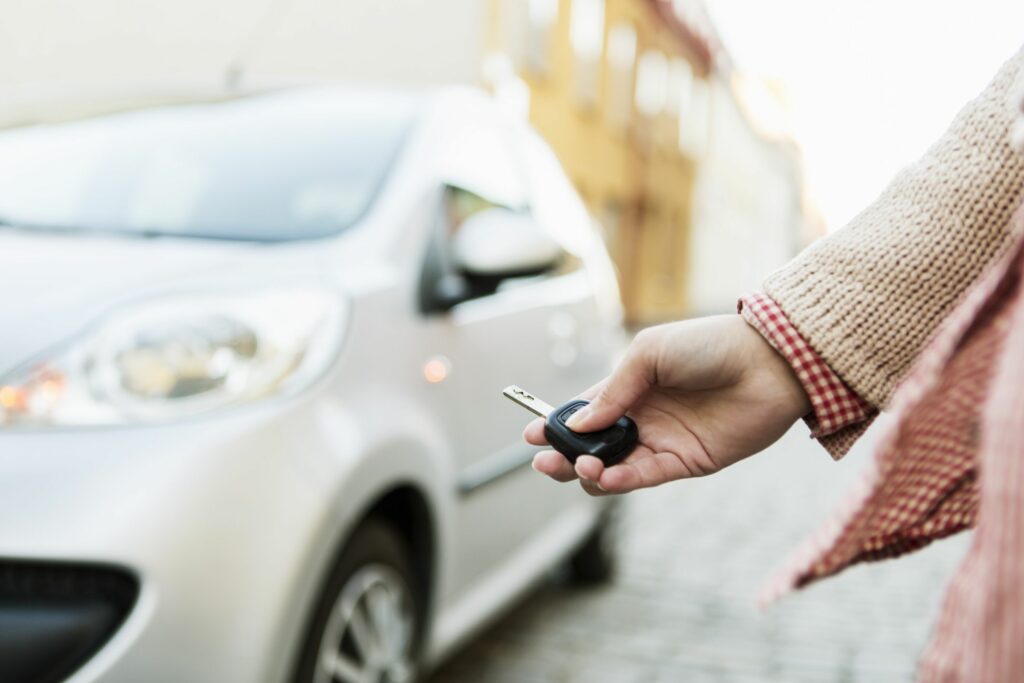
Ensuring Safety on the Road: After You Start Your Vehicle, Always Check Your Car’s Components
As responsible drivers, it’s crucial to prioritize precautionary measures to protect ourselves, our passengers, and fellow road users. While most of us are familiar with pre-driving checks, today we delve into a vital aspect often overlooked: post-start vehicle inspections. In this article, we emphasize the significance of conducting these inspections to ensure a safe and smooth journey. So remember, after you start your vehicle, always check your…

Tire Pressure
One of the essential elements to monitor after starting your vehicle is the tire pressure. Adequate tire pressure not only enhances fuel efficiency but also improves vehicle handling and overall safety. It’s recommended to carry out routine checks using a reliable tire pressure gauge. Ensure that the pressure matches the specifications outlined in your vehicle’s manual. Additionally, be attentive to signs of wear or damage, such as bulges, cracks, or uneven tread wear, which may necessitate immediate attention or tire replacement.
Mirrors and Visibility
After starting your vehicle, take a moment to verify the positioning and clarity of your mirrors. Adjust them to provide an optimal field of view, allowing you to effectively monitor the surroundings and eliminate blind spots. Properly functioning mirrors enable you to gauge the proximity of nearby vehicles, pedestrians, and cyclists, facilitating safer lane changes and turns. Additionally, ensure that your windshield, windows, and rearview mirror are clean and free from obstructions, such as dirt, frost, or condensation, which may hinder visibility.
Seatbelts
The significance of seatbelt usage cannot be overstated when it comes to passenger safety. After starting your vehicle, remind yourself and your passengers to buckle up before embarking on your journey. Ensure that seatbelts are securely fastened and properly adjusted for each occupant. In the event of an accident or sudden braking, seatbelts are the primary defense against injuries, significantly reducing the risk of ejection or severe impact. Remember, it’s not only a legal requirement but a fundamental responsibility to prioritize the safety of all vehicle occupants.
Dashboard Indicators
Post-start vehicle inspections should include a quick scan of your dashboard indicators. These important warning lights provide crucial information about your vehicle’s health and any potential malfunctions. Pay attention to indicators such as the check engine light, oil pressure warning, battery charge, or tire pressure monitoring system. Familiarize yourself with the meanings of these symbols and consult your vehicle’s manual or a qualified mechanic if any warning lights persist or if you’re unsure about their implications. Prompt action can help prevent further damage or breakdowns.
Rearview Camera and Sensors
Modern vehicles often come equipped with rearview cameras and proximity sensors to aid in safe reversing and parking maneuvers. After starting your vehicle, check the functionality of these systems by engaging reverse gear and observing the corresponding displays or audible alerts. Ensure that the camera lens is clean and free from debris, allowing for accurate image capture. Regular maintenance of these features will help you navigate tight spaces, prevent collisions, and safeguard pedestrians or objects located behind your vehicle.

The Importance of Engine Fluids
Another vital aspect to check after starting your vehicle is the condition of engine fluids. These fluids play a crucial role in maintaining the proper functioning of your vehicle’s engine and other vital components. Here are the key fluids to inspect:
- Engine Oil: Check the oil level using the dipstick and ensure that it falls within the recommended range. If the oil appears dirty or has a low level, it’s essential to schedule an oil change or top-up.
- Coolant: Verify the coolant level in the reservoir and ensure that it is at the appropriate level. Insufficient coolant can lead to overheating, while leaks or discoloration may indicate underlying issues that require attention.
- Brake Fluid: Check the brake fluid level in the master cylinder reservoir. Inadequate brake fluid can affect braking performance, so ensure it is at the recommended level and free from contamination.
- Power Steering Fluid: If your vehicle has power steering, inspect the fluid level and ensure it meets the manufacturer’s recommendations. Inadequate fluid can impact steering responsiveness.
- Transmission Fluid: For vehicles with automatic transmissions, it’s crucial to check the transmission fluid level and condition. Low or degraded fluid can lead to transmission issues, so follow the manufacturer’s guidelines for proper maintenance.
Regularly monitoring and maintaining these engine fluids after starting your vehicle will contribute to optimal performance, longevity, and overall safety on the road. Remember to consult your vehicle’s manual for specific instructions on checking and replenishing these fluids, or seek assistance from a qualified mechanic if needed.
Keyless Keeper – The Device That Protects Your Car
A smart keyless protector is a little inexpensive device that is attached to the battery within the key fob and activates only while you are moving. Its cutting-edge technology ensures your automobiles’ complete safety. When the smart keyless protector senses motion, it continues to send radio signals; otherwise, it prevents all types of magnetic waves from propagating. Because it prevents the key fob from emitting any signals, hackers (thieves) have almost no opportunity of interfering with your keys and unlocking your automobile. For example, if you’re asleep or eating lunch, your key fob isn’t moving and won’t transmit signals unless you move it. This device helps you to rest easy knowing that your vehicle is safe.
Conclusion
Safety should always be our top priority as drivers. After you start your vehicle always check your car’s safety features. By incorporating post-start vehicle inspections into our routine, we contribute to safer roads for everyone. Remember, after you start your vehicle, always check your: tire pressure, mirrors and visibility, seatbelts, dashboard Indicators, rearview Camera and Sensors.




